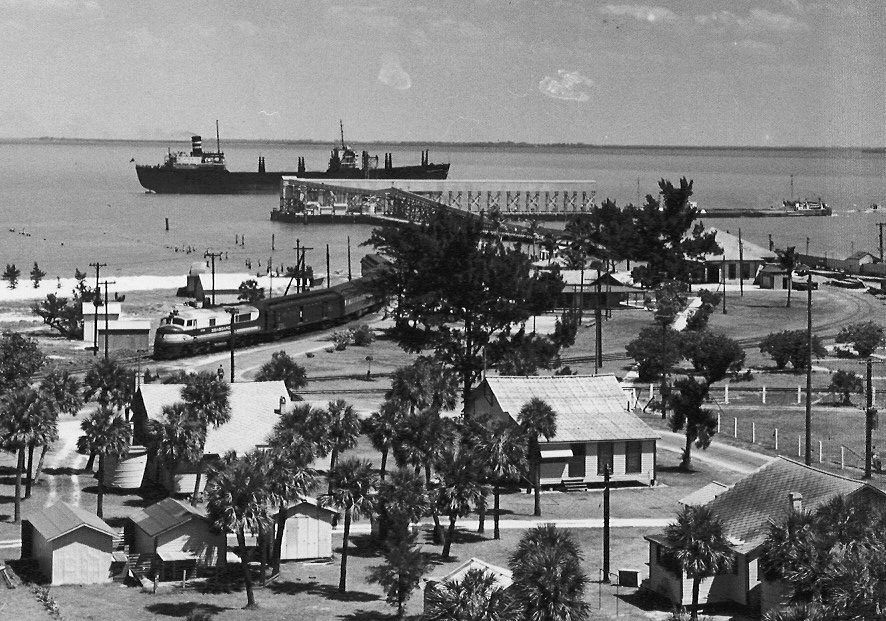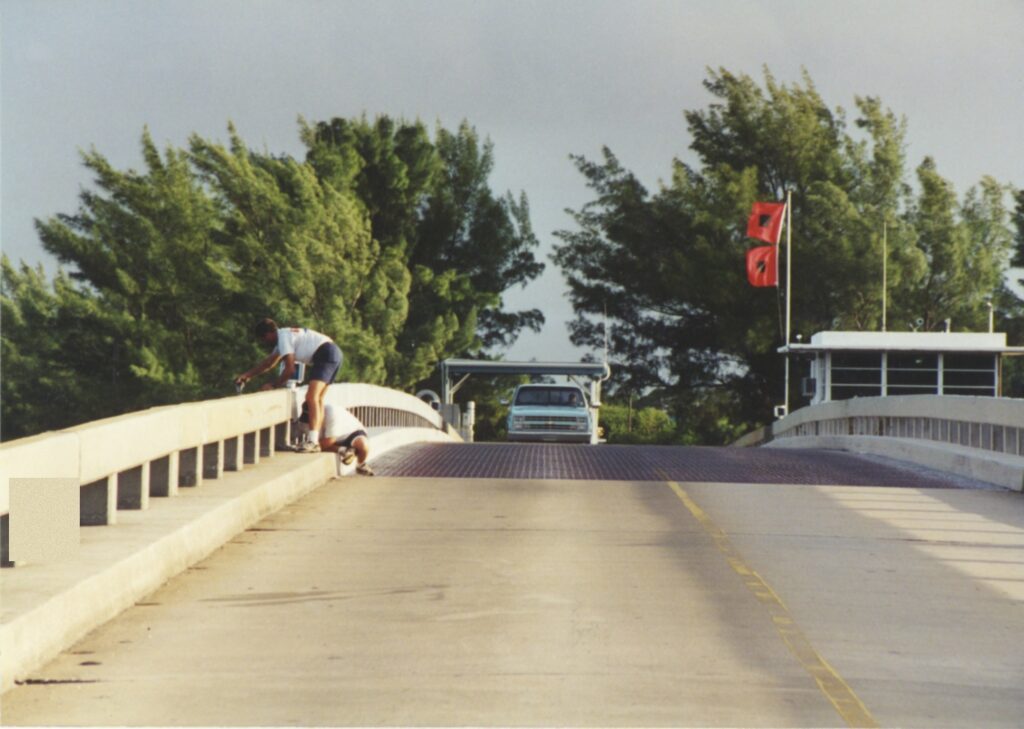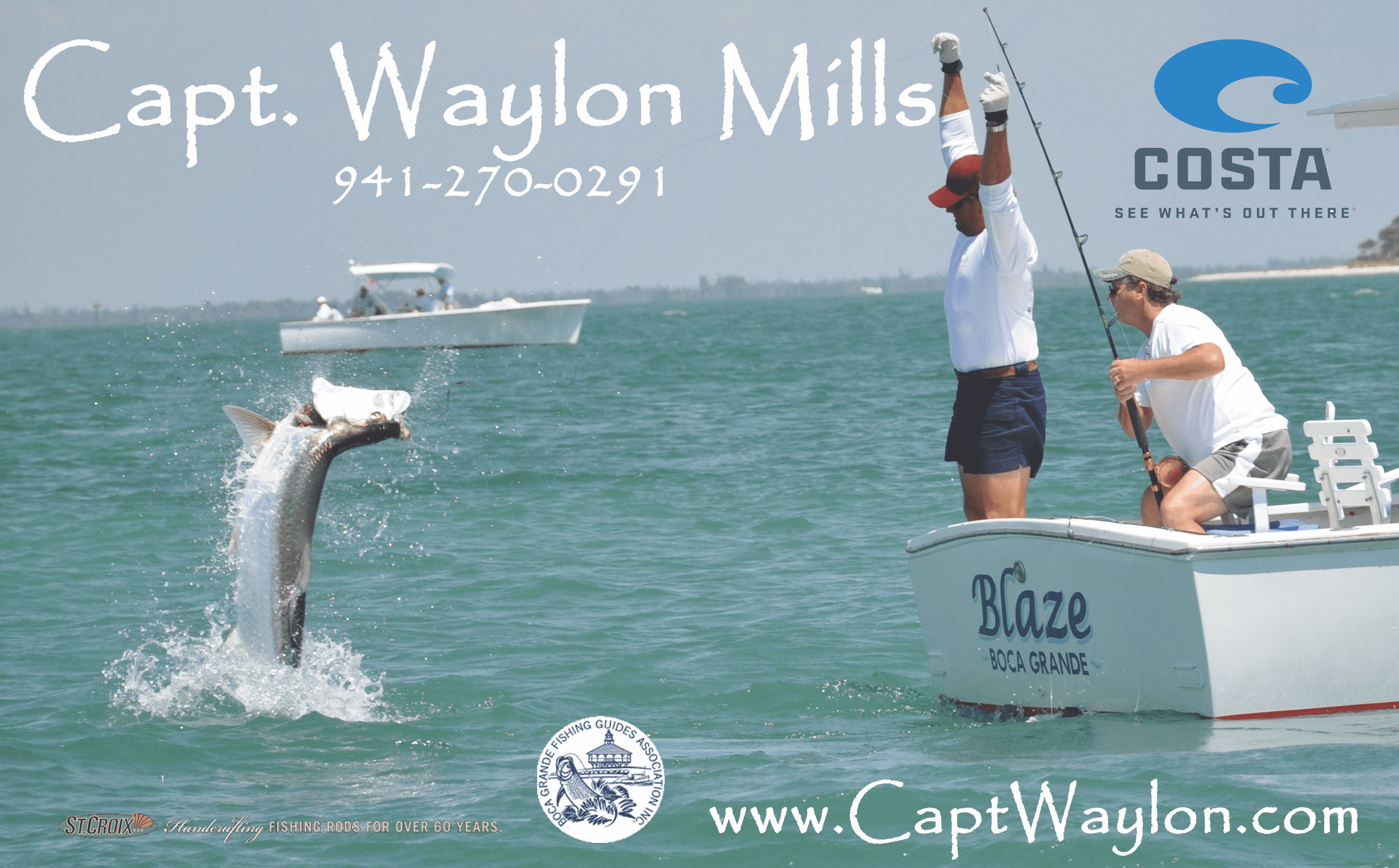History What Ifs: Boca Grande with no bridge, with an airport, port

BY JAMES J. BLAHA, DIRECTOR
BOCA GRANDE HISTORY CENTER
“In order to understand the difference between the Boca Grande of 1949 and today, you have to realize that in 1949, Gasparilla Island, of necessity, was a self-contained island. It had the stores, services, and schools that it needed for the people who lived, worked and visited here … I have often thought that during that period of time, Boca Grande must have been the most diverse community in the country.”
– Capt. Robert W. Johnson (2002)
As one of the caretakers of Gasparilla Island’s and Boca Grande’s history, I am fascinated by the fact that what appear to be two opposing scenarios combined to result in the evolution of a unique community. History has demonstrated that “self-containment” of a given community can result in isolation and lack of progress. “Diversity” is often characteristic of communities that encourage innovation and communication with other regions. Gasparilla Island and Boca Grande’s history of self-containment, however, resulted in a socially and economically diverse community, as described by Capt. Johnson.
Obviously, the island today is no longer “self-contained,” and “diversity” may or may not be an appropriate label for today’s Boca Grande community. Currently, the Boca Grande community is being confronted by challenges related to population growth and an increasing number of visitors. Some of the “old-timers” and “locals” have shared with me their dismay and regret and suggest that the current population statistics verify the evolution of a decreasing dedication to a sense of community. Others have said that the large number of nonprofits such as the Woman’s Club, the Boca Grande Historical Society, the Art Alliance, and other organizations are proof of a positive dedication to community development.
Given my assessments, as previously indicated in this article, I began to speculate as to what might characterize the island today if some of the important components did – or did not – occur. Join me as I turn back the clock to a few alternative scenarios for Gasparilla Island and Boca Grande.
Alternative Scenario No. 1: No Bridges
The early 1950s witnessed a debate about connecting Gasparilla Island to the mainland. On May 18, 1950, the Fort Myers News-Press included an article which stated:
“These reflections are prompted by the row at Boca Grande over the proposal to build a causeway there from Placida which would bring the picturesque island resort closer to the beaten track of the motor tourist and end its long isolation. This would be progress without a doubt. It would bring new money and new people into Boca Grande, it would increase the business of those there now and provide opportunities for new businesses, it would mean growth. Yet those who oppose the causeway and put themselves in the position of opposing progress have much to be said on their side too.
“A good deal of the charm of Boca Grande arises precisely from its isolated situation. This isolation gives the place a unique attraction. There are plenty of spots along Florida’s enormous coastline now where the casual tourist can find accommodations and where developers can find an opportunity. But spots that provide remoteness and privacy like Boca Grande are few and growing fewer, and these qualities ought not to be lightly cast aside.”
Another News-Press article (Feb. 13, 1951) indicated that proponents of bridges and the causeway believed:
“This territory can never grow and prosper so long as ingress and egress is restricted to present means; that only a causeway and bridges can adequately provide for the accessibility that is required if the natural attractions of the area are to be enjoyed by the public generally. On the other hand, there is a substantial group which appears to be sincerely motivated by a deep-rooted desire to continue their restful and peaceful way of life in their cloistered and secluded island, unmolested by the clamor and commercialization which usually comes with growth and development of any region.”

In 1964 (bridges and causeway completed in 1958), an article in the Fort Lauderdale News (June 14) stated:
“The wealthy winter colonists were much disturbed when a 75-cent toll bridge replaced the infrequent $6 ferry, fearing the hoi polloi would overrun them, but Boca is as empty and sleepy as ever. The bridge brought many private parties for a year or two, then the novelty wore off.”
Can you imagine Gasparilla Island and Boca Grande without bridges or a causeway? Perhaps a more isolated lifestyle on Gasparilla was mitigated by the existence of a railroad and a thriving Port Boca Grande. You decide.
Alternative Scenario No. 2: An Airport
Although the Boca Grande Hotel maintained a small landing strip on the island, in 1950 Lee County commissioners sent a letter to the Civil Aeronautics Commission stating that a larger airport on Boca Grande would significantly contribute to the defense of the United States.
Previously, an engineer for the Civil Aeronautics Administration (CAA) had rejected the Lee County proposal, although the U.S. government owned property on the south end of Gasparilla Island. Following the notification of rejection, Lee County commissioners responded:
“As the Boca Grande airport will contribute to national defense, it is to be hoped the proposed project can be reinstated in the federal aid airport program. Boca Grande is an isolated community and is often cut off from means of transportation other than air by storms. It is central on a considerable stretch of Gulf coastline and can serve as a subsidiary base for patrolling this area. The cost of the improvement will be negligible in comparison with the value. Boca Grande is a deep-water port and in wartime it would be essential to maintain a quick means of transportation and communication with freighters using that port. It is requested that you bring these factors to the attention of the authorities in an effort to have the project included in the pending appropriation.”
Fortunately, or unfortunately (you decide), the proposed Boca Grande airport project was ultimately dropped by the CAA. Today, no major airport exists on Gasparilla Island.
Alternative Scenario No. 3:
Expansion Port Boca Grande

“Once the property is gone (probably for condominiums), it will be gone forever, and this part of Florida will be the only coastal metropolitan area in the state without a regional port.”
– Capt. Robert Johnson (1982)
“Financially speaking, there should be no further development of Boca Grande.”
– Creighton L. Sherman (1982)
During the first half of the 1980s, proposals to expand Port Boca Grande were discussed and debated. Railroad passenger service ended in 1958, and the shipment of phosphate from Port Boca Grande ended in 1979 (freight and cargo train service ended in 1981). At least 42 acres owned by the Seaboard Coast Line Railroad did not include plans for an expanded port.
The conservation district (approved by the Florida Legislature in spring of 1980 and by Gasparilla Island voters in a referendum) created strict development regulations on the island. The act, however, exempted Port Boca Grande until July 7, 1981, to give Lee County time to draft a port development plan.
In April 1981, a bill was introduced in the Florida Legislature to create guidelines for developing the 42-acre port site in case Lee County wanted to pursue acquiring the property and revitalize and expand Port Boca Grande. Lee County supported the bill, and in June 1981, the Lee County Zoning Board decided to rezone the 42 acres, eventually allowing for the expansion of Port Boca Grande. Specifically, the Lee County Zoning Commission approved a special port zoning classification that would permit activities such as bulk liquid storage, transshipment of cargo, warehousing, and additional marina-related activities.
According to the Fort Myers News-Press (April 3, 1981): “County planners envisioned a refitted, slightly expanded port anchoring a water-borne transport system for shuttling goods to and from Southwest Florida.”
Discussion and debate regarding expanding Port Boca Grande continued during the next few years. Unfortunately, there is not enough space in this article to describe in detail the various legal logistics and arguments that transpired. However, the following is a brief list of the “pros” and “cons”:
Pros:
- No additional dredging would be required.
- Not expanding would cause this part of Florida to be the only coastal metropolitan area in the state without a regional port.
- Water transportation is cheaper and a more efficient means of transporting bulk commodities.
- An expanded port would attract many kinds of small and intermediate-sized industries to South Florida.
- No ecological harm to the environment.
Cons:
- Cost of port expansion would exceed $50 million, with annual expenditures over $20 million.
- Environmental threats to Gasparilla Island, the Charlotte Harbor Aquatic Preserves, and the Cape Haze and Pine Island preserves; grass beds along the Intracoastal Waterway would be threatened.
- An expanded port is not compatible with the existing way of life, environment and economy of the island.
- Based on ecological, financial and sociological studies, the feasibility of expanding Port Boca Grande is non-existent.
By 1983, an article in the Fort Myers News-Press (Feb. 16) stated: “It now appears doubtful that plans to expand an existing port at Boca Grande will ever become reality.”
As we know, the port was not expanded. But it is interesting to speculate how life on Gasparilla Island and Boca Grande might have changed with a major expansion of Port Boca Grande. You decide.









